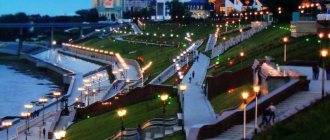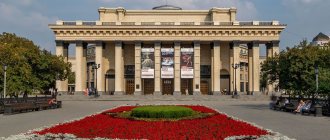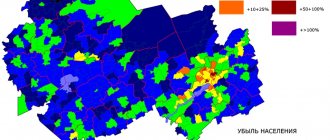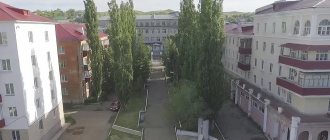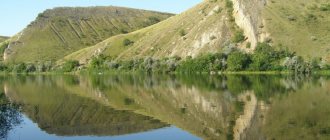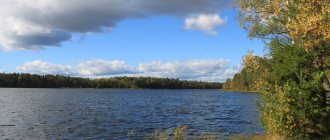The city of Novosibirsk, the capital of the Novosibirsk region, raised many questions among members of our community. People argued until their fingers were callused about the materials presented in the articles: nonsense, the author had never been to the city, a custom article. I would like to assure you in advance that no one orders articles from us. Everything is written on the initiative of the project’s author group, and according to the vector of community development. And the fact that the editors’ opinions sometimes do not coincide with the readers’ opinions is not surprising, because we are all different people, and, as we know, there is no ultimate truth.
Geographical position
The Novosibirsk region is located in the southeastern part of the West Siberian Plain, mainly in the interfluve of the Ob and Irtysh (southern part of the Vasyugan Plain of the Baraba Lowland), in the east it adjoins the Salair Ridge. It borders on Kazakhstan and the Altai Territory from the south, from the Kemerovo region from the east, from the Omsk region from the west, and from the Tomsk region from the north.
About 350 rivers flow in the region, the main river being the Ob. The Novosibirsk Reservoir is located near Novosibirsk; there are more than 3,000 lakes in the region.
The area of the Novosibirsk region is 177.8 thousand square meters. km.
The Novosibirsk region is home to 2,666,407 people, of which 1,473,730 (more than 55%) are residents of Novosibirsk.
Ancient centuries
In the 7th-6th centuries BC. e. forest tribes of the Mongoloid type penetrated into the territory of the Novosibirsk Ob region, and in the 3rd-2nd centuries BC. e. - northern forest tribes By this time, fortified settlements appeared - fortified settlements surrounded by earthen ramparts and ditches. At the beginning of the 13th century, the hordes of Genghis Khan fell on Siberia, after whose death a struggle for power began between his sons and grandsons. At this time, the Siberian Tatar nationality emerged in Western Siberia. It was formed as a result of the merger of local tribes: the Altai Kipchaks, who gave the Siberian Tatars their Turkic language, and the conquerors - the Tatar-Mongols. The Baraba Tatars lived in the western part of the Novosibirsk region, and the Chat Tatars lived in the northeastern part, along the banks of the Ob. One of the energetic tribal leaders, Mara-Mamet, in 1495 united the Tatar lands along the Tobol and in the middle reaches of the Irtysh into one khanate and declared himself its khan. Then he conquered and annexed the lands of the Tyumen Khanate and the Baraba Tatars to his possessions. The city of Isker (Kashlyk) became the capital, and the new khanate was named Siberian.
Siberian Khanate, Russian colonization (XVI-XVIII centuries)
The struggle for supreme power in the Siberian Khanate intensified in the middle of the 16th century, when one of the descendants of Genghis Khan, the son of the Uzbek ruler Kuchum, who seized all power in Siberia, laid claim to the khan’s throne.
After the conquest of the Kazan (1552) and Astrakhan (1556) khanates, the paths to the east opened for the Russian people. On September 1, 1582, a detachment of the legendary Ermak set off for Siberia. The decisive battle with Kuchum took place on October 26, 1582 on the banks of the Irtysh. In it, Ermak won and then took Isker (Kashlyk) without a fight. After the death of Ermak in 1584, the surviving 150 Cossacks left Siberia and went “to Rus'.” But at this time, a detachment sent by the new Tsar Fedor, led by governor I.Ya. Mansurov crossed the Urals and gained a foothold in Siberia. On August 20, 1598, Andrei Voeikov’s detachment defeated Kuchum’s army at the mouth of the Irmen River in the territory of what is now the Novosibirsk region. Having suffered defeat, Kuchum could no longer recover from it. The Chat and Baraba Tatars accepted Russian citizenship. A new period has begun in the history of Siberia.
At the end of the 16th century, mass migration to Siberia from the European part of the country began. The government launched energetic activities: peasants from the northern districts, exiles, and city residents (townspeople) who were “cleaned up” (that is, recruited) by the tsarist governors were sent to Siberia. However, free settlers played a decisive role in the formation of a permanent peasant population. They were attracted by rumors about free fertile lands and free life.
Under the protection of defensive lines, Russian peasants began to settle in the southern regions of Western Siberia. The settlement of the region began from the Tomsk district. In 1703, near the mouth of the Umreva River, the Umrevinsky fort grew, and Russian villages appeared in the basins of the Oyash, Chaus, and Inya rivers. In 1710, the village of Krivoshchekovskaya was founded - a Russian settlement on the territory of the future Novosibirsk. In 1713, the Chaussky fort was erected on the banks of the Ob. Another 3 years later, the Berdsky fort grew at the mouth of Berdi. In 1722, in the Barabinsk steppe along the road connecting Tara with Tomsk (and which later became part of the Moscow-Siberian tract), Ust-Tartassky, Kainsky and Ubinsky fortified points were founded.
Cities of the Novosibirsk region
Novosibirsk is the capital of Siberia, and the most shocking (after Yekaterinburg, probably) city beyond the Urals. A real metropolis, second in population only to St. Petersburg and the Mother See. Here you can stand in traffic jams for three hours, cheat in countless cafes and ride the metro. It's Moscow in miniature, the only thing missing is the mausoleum. An excellent option for moving from backward Siberian villages and small, dying towns.
Berdsk - Berdsk is three times older than Novosibirsk. When the capital of Siberia was still Novonikolayevka, carriages of merchants already traveled along it. To some extent, Berdsk is a resort town. It is located on the shore of the Ob Sea in a green zone. Many Novosibirsk residents like to relax here, and on Friday evenings there are quite a lot of traffic jams on the Novosibirsk-Berdsk highway. In total, there are just over one hundred thousand Berdsk residents in the world. It is possible that over time, when Novosibirsk absorbs Berdsk, the residents of Berdsk will remain only in the annals of history.
Tsarist Siberia (XIX-XX centuries)
In 1822, on the initiative of M.M. Speransky, a reform of the management of Siberia was carried out, taking into account both the interests of the state and the needs of the region with a multinational population. The manifesto of February 19, 1861 provided peasants with personal freedom. This reform was of considerable importance for the region, although there were no landowner peasants here. The number of migrants from the central land-poor regions of Russia to Siberia has increased noticeably.
The rapid development of the region was facilitated by the construction of the Trans-Siberian Railway and the railway bridge across the Ob in the area of the village of Krivoshchekovsky. It must be said that the railway bridge was initially planned to be built in the Tomsk region, but due to the severe swampiness of the area, this idea was abandoned, moving the construction site of the bridge to the area of the ancient city of Kolyvan. By order of the head of the survey party, engineer and writer Nikolai Georgievich Garin-Mikhailovsky, sections of the Ob River 100 miles up and down from Kolyvan were examined. L
The crossing of the Ob near the village of Krivoshchekovo was unconditionally recognized as the best and narrowest place (the width of the river is 360 fathoms versus 706 at the village of Skalinsky, the closest “competitor”). On May 17 (5th old style 1892, on the proposal of the Ministry of Railways, the Committee of Ministers approved the plan for the construction of the West Siberian section of the Siberian Railway.
On May 12 (April 30, old style), 1893, with the opening of navigation along the Ob, the first detachment of bridge builders arrived at the mouth of the Kamenka River. Some sources call this date the birthday of the future Novosibirsk, but the merchants of Novonikolaevsk considered the birth date of the city to be April 1 (March 20, old style) 1894, when the “General Trade Store” of the merchant E.A. opened on the first market square (in the area of the modern Novosibirsk bus station). . Zhernakova.
In October 1895, a meeting of the population decided “to rename the village of Krivoshchekovsky, in view of the construction of a church in the name of the Holy Prince Alexander Nevsky, to Alexander Nevsky.” But already on December 15 (3rd according to the old style) of the same year, a gathering of the population petitioned to rename the village, called Novonikolaevsky, into a posad or city. The Tomsk governor submitted a petition to the Ministry of Internal Affairs to rename the village. Alexandrovsky Tomsk province in the village. Novonikolaevsky "in honor of His Imperial Majesty, the now safely reigning Sovereign Emperor." On February 17 (March 1), 1898, the Ministry of Internal Affairs granted the petition to rename the village of Aleksandrovsky to the village of Novonikolaevsky.
Finally, on January 10, 1904, December 28, 1903, according to the old style, Emperor Nicholas II approved the position of the Committee of Ministers that the village of Novonikolaevsky should be elevated to the status of a district-free city in the Tomsk district. From that day on, the city began to officially be called Novonikolaevsk.
Industry gradually developed in cities and towns. In many villages, small oil factories based on manual labor appeared, producing oil for export. By 1907 there were several dozen of them. P. A. Stolypin even stated that Siberian oil began to provide more funds to the treasury than Siberian gold.
At the end of 1906, in accordance with the agrarian law of November 9, a new mass resettlement of peasants to Siberia began (Stolypin reform). During 1906-1914, about 3 million people moved to Siberia. The government gave benefits to the settlers, but the conditions were not easy.
In 1909, Novonikolaevsk received full city status.
The World War made Novonikolaevsk one of the centers that supplied soldiers, equipment, and food to the front. Production at rusk, butter, sausage, cheese, leather and shoe factories grew rapidly. The decrease in the male population in the village led to the fact that in 1915 half as much grain was harvested as in 1914. In 1925 it was renamed Novosibirsk.
Economic boom
The decision to build a railway line to Altai and the construction that began created a real economic boom. This was the construction of the century for that time. The future flagship of the Siberian Federal District, Novosibirsk, as it appears to us in the present, was born precisely at this time. The plans of the tsarist government were to make it the capital of the Altai province in 1917. But the Kerensky government took a different path, giving preference to Barnaul.
7 banks were opened in the city. The population at that time was 70 thousand people. Housing was built, new industrial enterprises were created. Agriculture developed. The city's infrastructure was changing. A hospital and schools were opened. By the way, in 1912 the city was the first in the country, along with Yaroslavl, to declare universal primary (grade 4) education, which for a country where only every fourth resident could read and write was a huge step forward. It is not for nothing that the main city of the Siberian Federal District, Novosibirsk, as it has become today, has become a world scientific center.
Civil war, pre-war time
The news that the Provisional Government had been overthrown in Petrograd and the All-Russian Congress of Soviets had proclaimed Soviet power came to the region on November 9, 1917. First of all, the banks were nationalized - Russian-Asian, Siberian Trading. This was followed by the nationalization of water transport and the Trans-Siberian Railway - the basis of the economy of the Novonikolaevsk region. The privately owned Altai Railway was also nationalized. All this quickly led to the destruction of existing economic ties and chaos.
At the beginning of 1918, an armed detachment was formed against the Bolsheviks in Novonikolaevsk, relying on the support of the townspeople, merchants, and industrialists. The peasantry of Siberia, embittered against grain requisitions, actually took their side. The performance of the Czechoslovak corps dramatically changed the balance of power. The power of the Soviets fell. Novonikolaevsk and the surrounding region found themselves deep in the rear of the Whites. By the summer of 1919, the Red Army launched a general offensive on the Eastern Front. On November 14, Kolchak’s capital, Omsk, fell. A month later, the Volga Regiment of the 27th Division of the 5th Red Army entered Novonikolaevsk.
Having restored power in Western Siberia, the Bolsheviks announced food appropriation. Food was forcibly confiscated from peasants and sent to Central Russia. The policy of “war communism” caused a deep crisis in the Siberian countryside. Peasants reduced acreage, slaughtered livestock, and reduced grain harvest. In March 1921, at the X Congress of the RCP(b), the surplus appropriation system was replaced by a food tax. Now the state did not take all the grain from the peasants, but only part of it. The peasants had the right to sell the remainder. Thus, a step was taken towards a market economy - NEP. The new economic policy also breathed life into industry. A stream of people flocked to Novonikolaevsk from everywhere. There was not enough housing, shacks were built and dugouts were dug; such villages were called “nakhalovki”.
From a provincial town in the Tomsk province, Novonikolaevsk-Novosibirsk gradually turned into the capital of the entire Siberian region.
In the second half of the 1920s, the country set a course for industrialization. Private landowners were forced into collective farms. Industrialization and collectivization were accompanied by mass repressions not only among the peasantry, but also among party workers, workers, office workers, intelligentsia, and clergy.
Until 1921, the territory of the Novosibirsk region was part of the Tomsk province, and there were even attempts to move the center of the province to Novonikolaevsk (December 23, 1919 - March 14, 1920). From June 13, 1921, Novonikolaevsk became the center of the new Novonikolaevsk province, on May 25, 1925, the center of the Siberian Territory, and from July 30, 1930, the West Siberian Territory.
On December 8, 1925, Novonikolaevsk was renamed Novosibirsk (on February 12, 1926, this decision was approved by the USSR Central Executive Committee).
On September 28, 1937, by the Decree of the Central Executive Committee of the USSR, the West Siberian Territory was divided into the Novosibirsk Region and the Altai Territory. This date is considered the official day of formation of the region.
Subsequently, in 1943, the Kemerovo region was separated from the region, and in 1944, the Tomsk region.
Administrative center of the Siberian Territory
In 1920, the Bolsheviks, remembering the dominant role of Tomsk in the white movement, moved the administrative center to Novo-Nikolaevsk. But the uprising in the South-West of the Tomsk province, the siege of Novo-Nikolaevsk, its harsh suppression, and the evacuation of all administrative and party institutions to Tomsk forced the Soviet government to temporarily abandon this step.
After the civil war, the entire country lay in ruins. The inhabitants of Novo-Nikolaevsk were just over 20 thousand people. The railway did not work. The most important task was to restore the functionality of the huge transport hub. Therefore, the Bolshevik government decides to establish the Novo-Nikolaevsk province on part of the territories of the Omsk and Tomsk provinces.
var blockSettings12 = {blockId:"RA-116722-12",renderTo:"yandex_rtb_R-A-116722-12",horizontalAlign:!1,async:!0}; if(document.cookie.indexOf(“abmatch=”) >= 0){ blockSettings12 = {blockId:”RA-116722-12″,renderTo:”yandex_rtb_R-A-116722-12″,horizontalAlign:!1,statId: 7,async:!0}; } !function(a,b,c,d,e){a[c]=a[c]||[],a[c].push(function(){Ya.Context.AdvManager.render(blockSettings12) }),e=b.getElementsByTagName(“script”)[0],d=b.createElement(“script”),d.type=”text/javascript”,d.src=”//an.yandex.ru /system/context.js",d.async=!0,e.parentNode.insertBefore(d,e)}(this,this.document,"yandexContextAsyncCallbacks");
On May 25, 1925, the administrative unit of the Siberian Territory was formed, headed by the city of Novo-Nikolaevsk. This became the prototype of the status of modern Novosibirsk - the federal district, which it has had since 2000. It included the provinces: Novo-Nikolayevskaya, Tomskaya, Altaiskaya, Omskaya, Yeniseiskaya, in addition, the autonomous region - Oirotskaya, which was later included in the Altai Territory.
The Great Patriotic War
During the Great Patriotic War, the region's industry quickly switched to producing products for the army, aviation and navy. By the end of 1941, 70% of the total production of Novosibirsk enterprises was products for the front. This period contributed to the rapid economic development of the region.
Factories, institutes, and creative groups are being evacuated here from the front line. In the first months of the war, specialists and equipment from more than 50 plants and factories arrived in the Novosibirsk region, and 26 hospitals were organized. The unfinished building of the Opera and Ballet Theater houses exhibits from the Tretyakov Art Gallery, the Hermitage, museums of Moscow, Leningrad, Novgorod, Sevastopol and other cities.
Groups from a number of theaters come to Novosibirsk.
During the war years, the industry of the Novosibirsk region, with the participation of evacuated factory teams, increased production output 8 times. Trains with military equipment and ammunition are sent to the front. The enterprises produce aircraft, shells, optical sights, uniforms, and radio transmitters.
